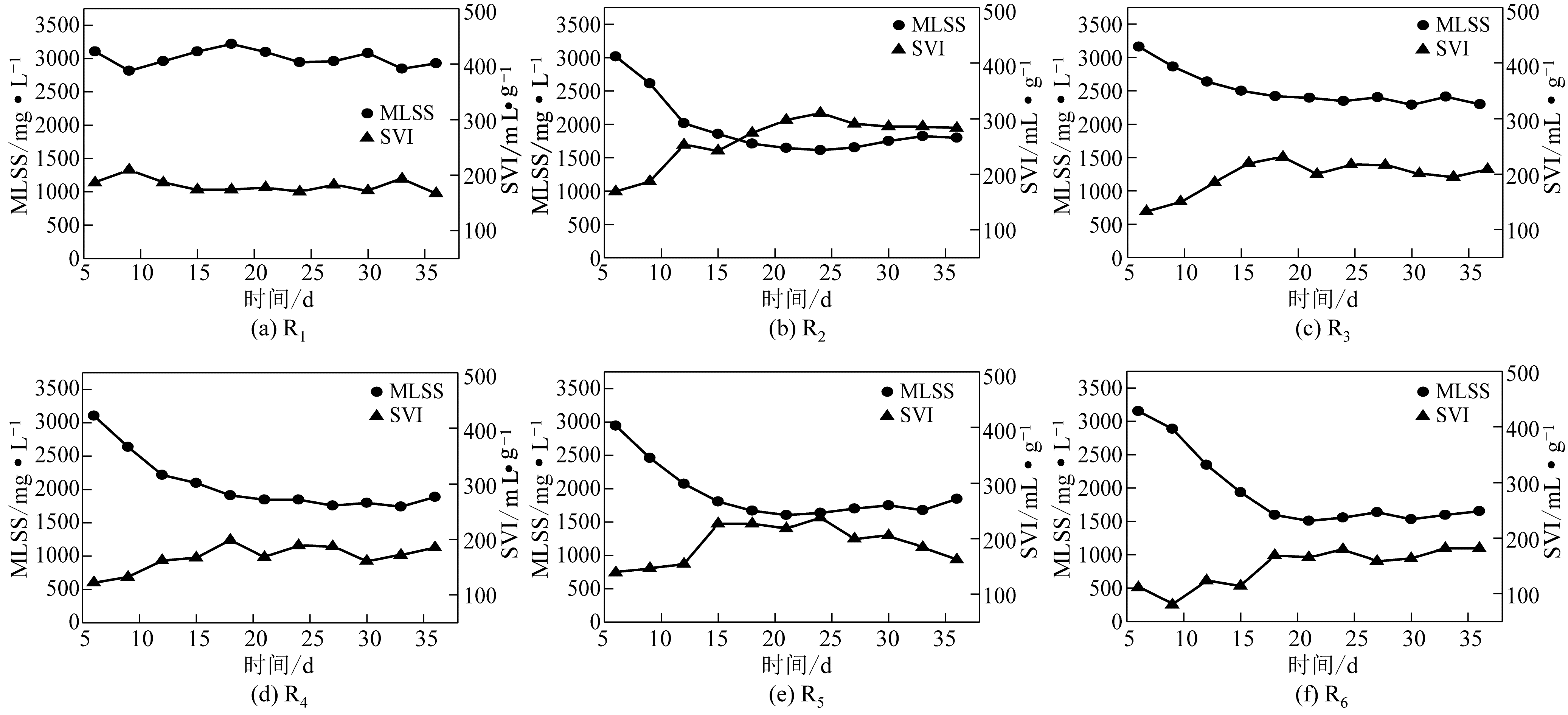| 1 |
ZHOUXueyang, LIUXiuhong, HUANGSiting, et al. Total inorganic nitrogen removal during the partial/complete nitrification for treating domestic wastewater: removal pathways and main influencing factors [J]. Bioresource Technology, 2018, 256: 285-294.
|
| 2 |
ZHANGTing, WANGBo, LIXiyao, et al. Achieving partial nitrification in a continuous post-denitrification reactor treating low C/N sewage[J]. Chemical Engineering Journal, 2018, 335: 330-337.
|
| 3 |
WANGGang, XUXiaochen, ZHOULiang, et al. A pilot-scale study on the start-up of partial nitrification-anammox process for anaerobic sludge digester liquor treatment[J]. Bioresource Technology, 2017, 241: 181-189.
|
| 4 |
JENNIS, VLAEMINCKS E, MORGENRITHE, et al. Successful application of nitritation/anammox to wastewater with elevated organic carbon to ammonia ratios[J]. Water Research, 2014, 49(2): 316-326.
|
| 5 |
SHALINIS S, JOSEPHK. Combined SHARON and ANAMMOX processes for ammoniacal nitrogen stabilisation in landfill bioreactors [J]. Bioresource Technology, 2018, 250: 723-732.
|
| 6 |
WEID, ZHANGK Y, NGO H H, et al. Nitrogen removal via nitrite in a partial nitrification sequencing batch biofilm reactor treating high strength ammonia wastewater and its greenhouse gas emission[J]. Bioresource Technology, 2017, 230: 49-55.
|
| 7 |
WANGQilin, YELiu, JIANGGuangming, et al. Side-stream sludge treatment using free nitrous acid selectively eliminates nitrite oxidizing bacteria and achieves the nitrite pathway[J]. Water Research, 2014, 55(10): 245-255.
|
| 8 |
SHEZonglian, ZHAOLinting, ZHANGXiaoling, et al. Partial nitrification and denitrification in a sequencing batch reactor treating high-salinity wastewater[J]. Chemical Engineering Journal, 2016, 288: 207-215.
|
| 9 |
MIAOYuanyuan, ZHANGLiang, LIBaikun, et al. Enhancing ammonium oxidizing bacteria activity was key to single-stage partial nitrification-anammox system treating low-strength sewage under intermittent aeration condition[J]. Bioresource Technology, 2017, 231: 36-44.
|
| 10 |
GEShijian, WANGShanyun, YANGXiong, et al. Detection of nitrifiers and evaluation of partial nitrification for wastewater treatment: a review[J]. Chemosphere, 2015, 140(9): 85-98.
|
| 11 |
GEShijian, PENGYongzhen, QIUShuang, et al. Complete nitrogen removal from municipal wastewater via partial nitrification by appropriately alternating anoxic/aerobic conditions in a continuous plug-flow step feed process[J]. Water Research, 2014, 55(2): 95–105.
|
| 12 |
刘宏, 彭永臻, 卢炯元, 等. 温度对间歇曝气SBR短程硝化及硝化活性的影响[J]. 环境科学, 2017, 38(11): 4656-4663.
|
|
LIUHong, PENGYongzhen, LUJiongyuan, et al. Effects of temperature on shortcut nitrification and activity of nitrification in intermittent aeration SBR[J]. Environmental Science, 2017, 38(11): 4656-4663.
|
| 13 |
吴军, 张悦, 徐婷, 等. AOB溶解氧亲和力低于NOB条件下序批反应器中NOB淘汰的实现机制[J]. 中国环境科学, 2016, 36(12): 3583-3590.
|
|
WUJun, ZHANGYue, XUTing, et al. Mechanisms of partial nitrification in sequencing batch reactor under the condition of AOB oxygen affinity lower than NOB[J]. China Environmental Science, 2016, 36(12): 3583-3590.
|
| 14 |
YongMA, PENGYongzhen, WANGShuying, et al. Achieving nitrogen removal via nitrite in a pilot-scale continuous pre-denitrification plant [J]. Water Research, 2008, 43(3): 563-572.
|
| 15 |
NAZRIM, DAVIDC, STUCKEY. Pre-oxidation of ammonium using nanofiltration membranes for partial nitrification preceding Anammox [J]. Chemical Engineering Journal, 2018, 353: 218-224.
|
| 16 |
LIJibin, YEWei, WEIDong, et al. System performance and microbial community succession in a partial nitrification biofilm reactor in response to salinity stress[J]. Bioresource Technology, 2018, 270: 512-518.
|
| 17 |
ZHUYichun , LIXin, DUMaoan, et al. Improve bio-activity of anaerobic sludge by low energy ultrasound[J]. Water Science & Technology, 2015, 72(12): 2221-2228.
|
| 18 |
LINLidong, WUJianyong. Enhancement of shikonin production in single- and two-phase suspension cultures of Lithospermum erythrorhizon cells using low-energy ultrasound[J]. Biotechnology & Bioengineering, 2002, 78(1): 81-88.
|
| 19 |
ZHENGMin, LIUYanchen, XINJia, et al. Ultrasonic treatment enhanced ammonia-oxidizing bacterial(AOB) activity for nitritation process[J]. Environmental Science & Technology, 2016, 50: 864-871.
|
| 20 |
朱易春, 王佳琪, 章璋, 等. 超声波参数对短程硝化的影响[J]. 中国给水排水, 2018, 34(5): 26-31.
|
|
ZHUYichun, WANGJiaqi, ZHANGZhang, et al. Effect of ultrasound parameters on partial nitrification[J]. China Water & Wastewater, 2018, 34(5): 26-31.
|
| 21 |
国家环境保护总局. 水和废水监测分析方法[M]. 4版. 北京: 中国环境科学出版社, 2006.
|
|
State Environmental Protection Administration. Standard methods for water and wastewater analysis[M]. 4th ed. Beijing: China Environmental Science Publishing House, 2006.
|
| 22 |
ZHANGRuina, JINRuofei, LIUGuangfei, et al. Study on nitrogen removal performance of sequencing batch reactor enhanced by low intensity ultrasound[J]. Bioresource Technology, 2011, 102(10): 5717-5721.
|
| 23 |
刘宏, 彭永臻, 牛立飞, 等. 交替缺氧/好氧法短程硝化及AOB和NOB活性特征[J]. 中国给水排水, 2017, 33(7): 31-35.
|
|
LIUHong, PENGYongzhen, NIULifei, et al. Shortcut nitrification and characteristic of AOB and NOB under alternating anoxic /aerobic mode [J]. China Water & Wastewater, 2017, 33(7): 23-27.
|
| 24 |
刘宏, 南彦斌, 李慧, 等. 间歇曝气模式下曝气量对短程硝化恢复的影响[J]. 环境科学, 2018, 39(2): 865-871.
|
|
LIUHong, YanbinNAN, LIHui, et al. Effect of aeration rate on shortcut nitrification recovery in intermittent aeration mode[J]. Environmental Science, 2018, 39(2): 865-871.
|
| 25 |
ZHENGMin, WUShuang, DONGQian, et al. Achieving mainstream nitrogen removal via the nitrite pathway from real municipal wastewater using intermittent ultrasonic treatment[J]. Ultrasonics Sonochemistry, 2019, 51: 406-411.
|
| 26 |
CHENGCheng, ZHOUZhen, QIUZhan, et al. Enhancement of sludge reduction by ultrasonic pretreatment and packing carriers in the anaerobic side-stream reactor: performance, sludge characteristics and microbial community structure[J]. Bioresource Technology, 2018, 249: 298-306.
|
| 27 |
郝二成, 袁星, 阜崴. 污泥膨胀原因及控制措施研究[J]. 环境工程, 2017, 35(7): 18-22.
|
|
HAOErcheng, YUANXing, FUWei. Research for sludge bulking and its control stategy[J]. Environmental Engineering, 2017, 35(7): 18-22.
|
| 28 |
王梦杰, 员建, 马华继, 等. 低强度超声波对膨胀活性污泥沉降性能及污泥减量的影响[J]. 化工进展, 2017, 36(3): 1134-1139.
|
|
WANGMengjie, YUANJian, HuajiMA, et al. Effects of low intensity ultrasonic treatment on settle ability of bulking sludge and sludge reduction[J]. Chemical Industry and Engineering Progress, 2017, 36(3): 1134-1139.
|
| 29 |
高春娣, 孙大阳, 安冉, 等. 间歇曝气下短程硝化耦合污泥微膨胀稳定性[J]. 环境科学, 2018, 39(7): 3271-3278.
|
|
GAOChundi, SUNDayang, ANRan, et al. Stability of nitritation combined with limited filamentous bulking under intermittent aeration [J]. Environmental Science, 2018, 39(7): 3271-3278.
|
| 30 |
朱易春, 李欣, 杜茂安, 等. 低强度超声辐照对厌氧污泥性能的影响[J]. 中国给水排水, 2015, 31(21): 25-29.
|
|
ZHUYichun, LIXin, DUMaoan, et al. Influence of Low intensity ultrasonic irradiation on performance of anaerobic sludge[J]. China Water & Wastewater, 2015, 31(21): 25-29.
|
 ),章璋1,2,李鑫1,2,田帅1,2,连军锋1,2,刘祖文1,2
),章璋1,2,李鑫1,2,田帅1,2,连军锋1,2,刘祖文1,2
 ),Zhang ZHANG1,2,Xin LI1,2,Shuai TIAN1,2,Junfeng LIAN1,2,Zuwen LIU1,2
),Zhang ZHANG1,2,Xin LI1,2,Shuai TIAN1,2,Junfeng LIAN1,2,Zuwen LIU1,2




